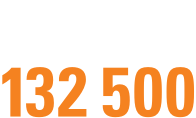Thunderstorm activity increases during summer months
Thunderstorm activity increases during summer months
Victoria State Emergency Service (VICSES) is warning all Victorians to remain vigilant and prepared for the possibility of severe storms and flooding during what has been predicted to be a long, hot summer.
While the danger of bushfires and heatwaves are on the forefront of most Victorians minds during the summer period, it is easy to dismiss dangers associated and severe thunderstorm activity that has also been shown to peak during the summer period.
Bureau of Meteorology severe thunderstorm archive data (2000-2015) shows a marked increase of severe storm activity in Victoria during the summer months (see figure 1)
Figure 1. Monthly distribution of Severe Thunderstorm events in Victoria from July 2000 to November 2015 (data provided by BoM)
Already this summer (Nov 2015-Jan 2016) has seen landslips, tornadoes, destructive winds and the tragic death of a Seymour man as a result of flash flooding. VICSES volunteers have responded to almost 5000 request for assistance due to storm of flood related damage in just over 2 months.
Rain may seem like welcome relief during long, hot summers especially on fire affected land however the loss of vegetation due to drought or bushfire can significantly affect how floods behave. Rocks and soil are more easily dislodged with the potential to trigger landslips and debris collecting in dry river beds can create significant damage to roads and bridges.
Many of Victoria’s more significant and damaging storm activity occurred during the summer months including:
- 6 March 2010: Largest hailstone event in Melbourne’s history, with VICSES volunteers working through over 7800 request for assistance over a single weekend
- Christmas Day 2011: Melbourne was subjected to a number of severe and dangerous thunderstorm with wind exceeding 120 km/h and hail greater than 5cm
- 12 Jan and 10 Feb 2011: VICSES managed the most significant flood event on record in Victoria with almost 50% of Victoria Local Government Areas affected.
As Victoria moves towards a stronger vision of all-hazards, all-agency emergency management and planning, it’s worth taking the time to think about how you and your family will respond to all natural emergencies. For tips on how to prepare for floods and storms, go to the VICSES website ses.vic.gov.au. For emergency information and warnings go to the VicEmergency website emergency.vic.gov.au.





